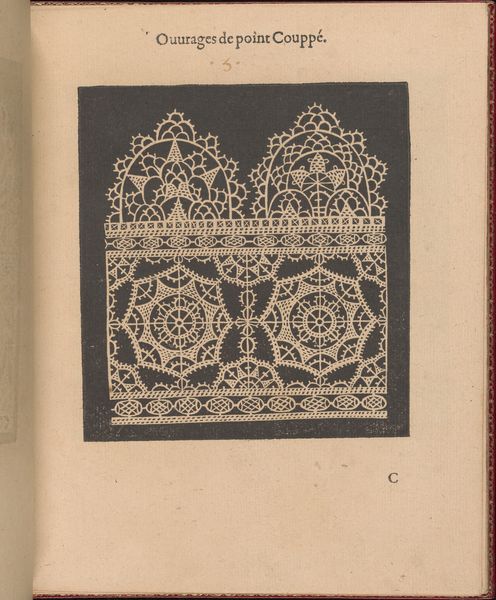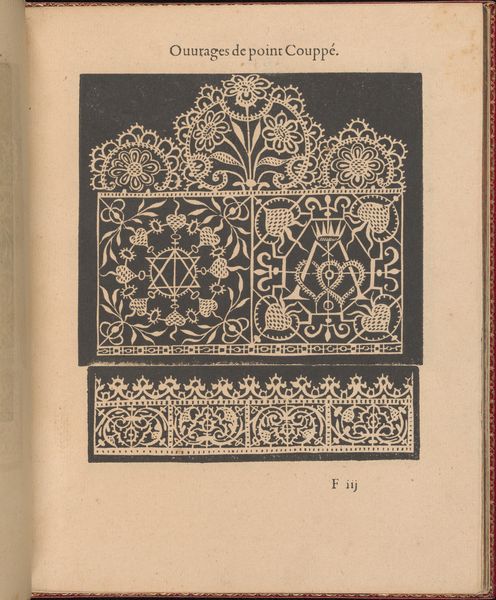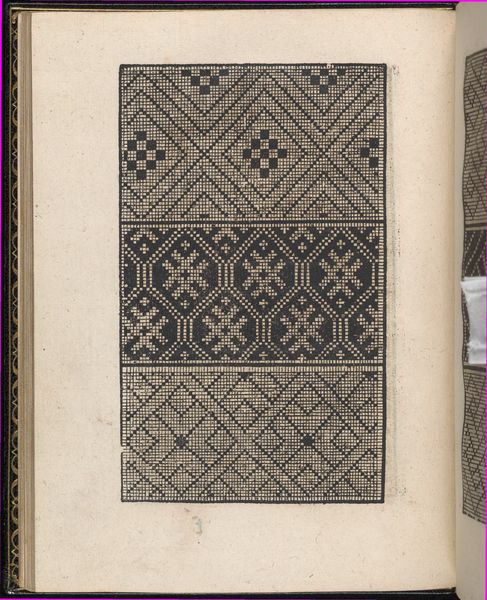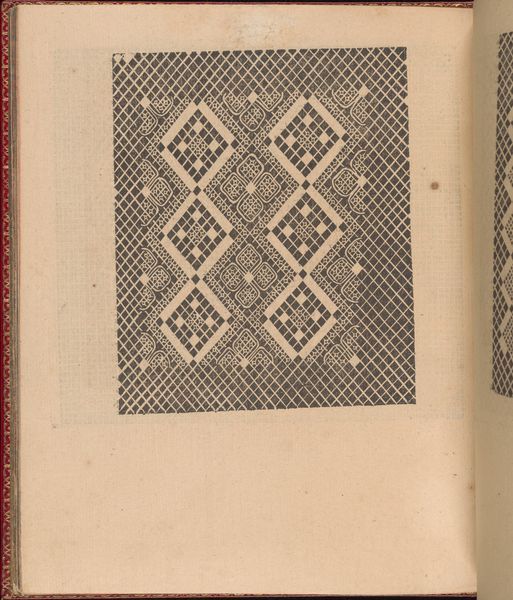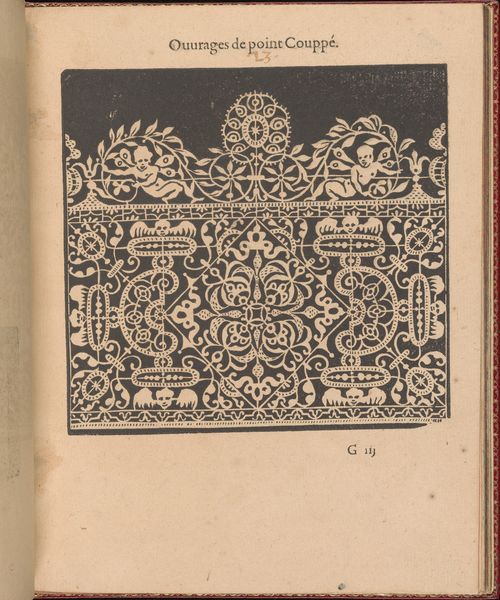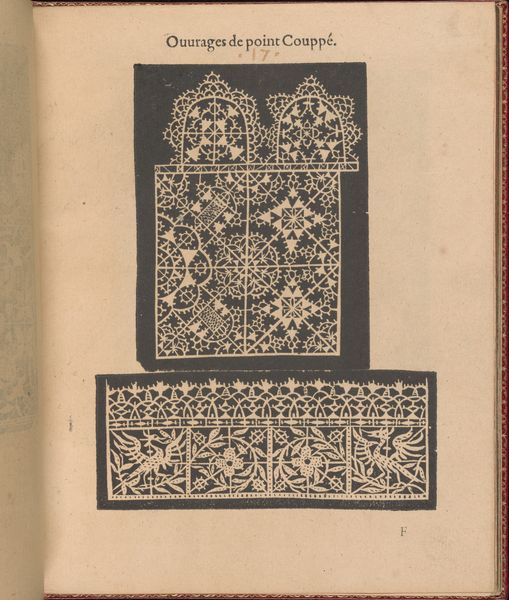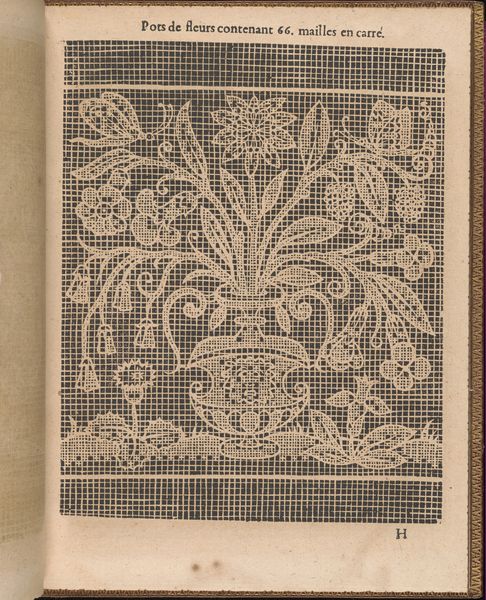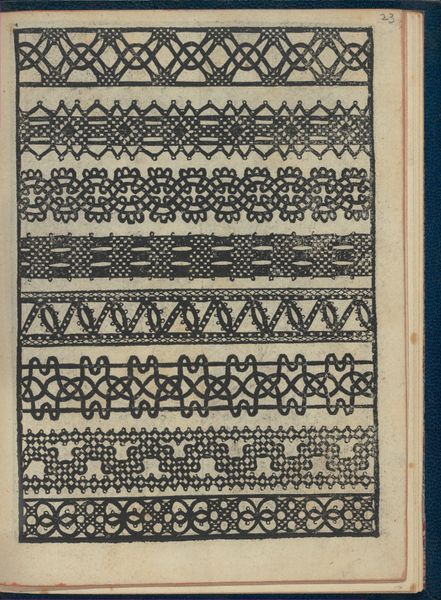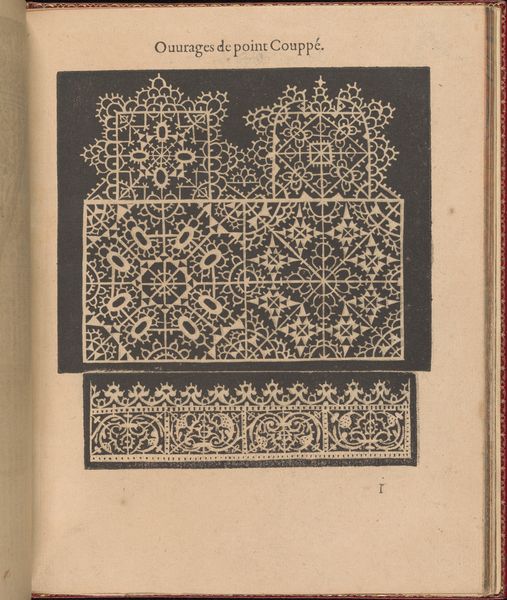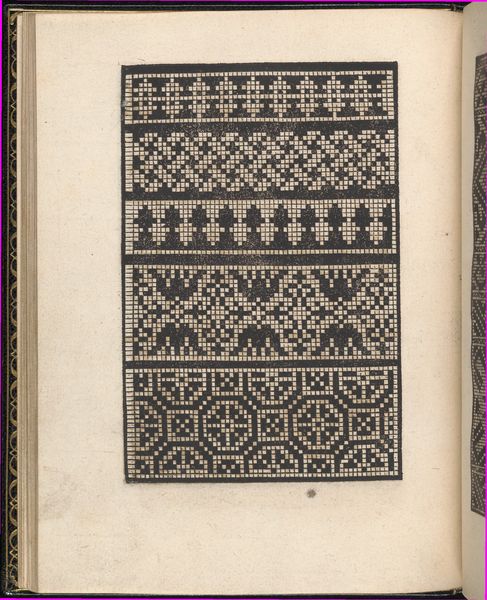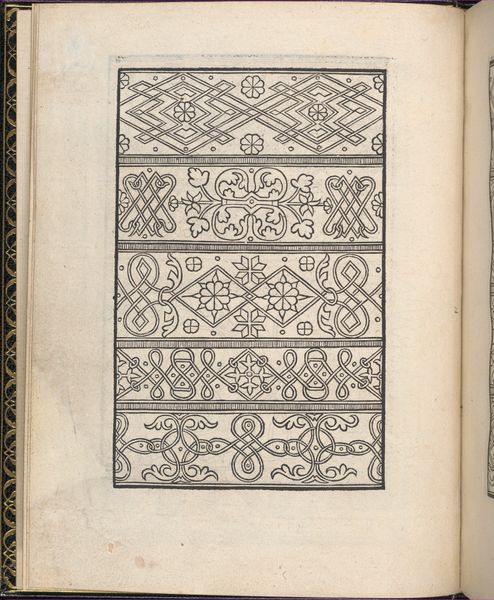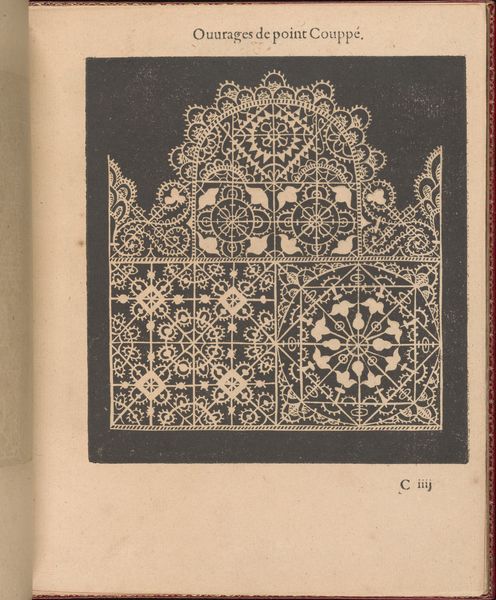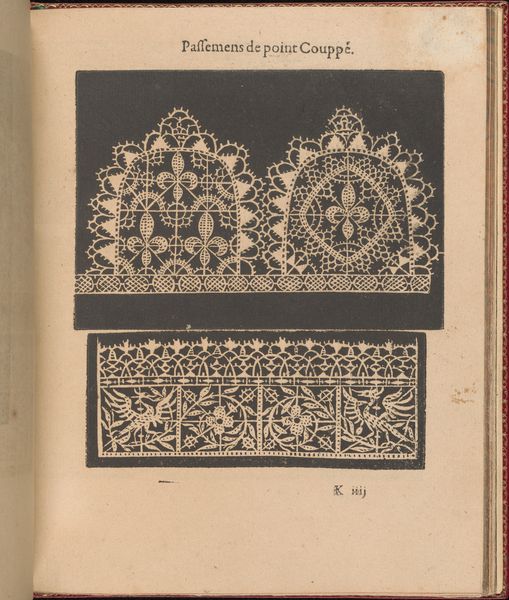
drawing, graphic-art, print, textile, woodcut
#
drawing
#
graphic-art
# print
#
book
#
textile
#
11_renaissance
#
woodcut
Dimensions: Overall: 9 1/4 x 7 1/16 in. (23.5 x 18 cm)
Copyright: Public Domain
Curator: Here we have a page from Matthias Mignerak’s book, "La Pratique de l'Aiguille," dating back to 1605. The print showcases intricate patterns for lacemaking. It's currently housed at the Metropolitan Museum of Art. Editor: My initial impression is one of delicacy contrasted against the dark background. The patterns seem so light, almost ephemeral, and yet meticulously planned and rendered. Curator: Indeed. Consider how lacemaking was not simply a craft but also a significant social marker in the Renaissance. Lace indicated status, wealth, and refinement, much like wearable art today. Editor: And these patterns served a didactic purpose, right? Beyond the purely aesthetic, they functioned as guides for lacemakers to follow, to disseminate artistic and material ideas more broadly? Curator: Precisely. Notice the repetitive motifs; the artist uses geometric and floral shapes, creating rhythm. The top example looks a bit like miniature crenellations on a castle. These symbols were not arbitrarily chosen. They evoked order, prosperity, and skillful artistry, desirable attributes during this period. The lower pattern integrates even denser combinations; what do these interweavings evoke for you? Editor: I see sun-like symbols paired with what could be seen as highly stylized boats. A silent but persuasive commentary, perhaps, on maritime trade which contributed greatly to wealth creation at the time. This could be speaking to broader societal influences that drove design and adornment choices. Curator: A sharp observation! Also, think about the materials involved: delicate threads painstakingly transformed. The act of creation mirrors themes of labor, skill, and luxury intertwining, visualized for posterity within these pages. Editor: Looking closer, there's something remarkable in translating something so three-dimensional into these flattened designs, and something very appealing that it allows this high status marker to be disseminated by print to a potentially much larger audience than would usually be able to create or wear such elite items. Curator: It shows that art served a variety of critical cultural purposes, well beyond aesthetics or simple utility. Thanks for drawing those meanings into our view. Editor: And thanks for laying out this very complex interweaving of visual symbolism. I find I look at that bottom example with new eyes.
Comments
No comments
Be the first to comment and join the conversation on the ultimate creative platform.
